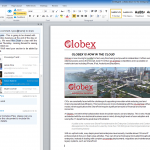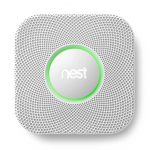New collaboration tool gets Office workers in a Huddle

We've looked at the Huddle desktop collaboration tool, which offers a blend of productivity and social networking, in the past here at BetaNews. The company is now launching another phase of its Connected Desktop with a plug-in for Microsoft Office.
By linking the power of Office tools with Huddle's cloud collaboration service the company aims to make workers more productive. Files can be saved into Huddle's secure cloud directly from Office applications but more importantly each document has a comment stream alongside it, allowing users to provide feedback on changes and reply to co-workers in context, all without leaving Office.
Business needs to adapt as ERP moves into the postmodern era

Enterprise resource planning (ERP) systems have historically been complex packages heavily tailored to the needs of individual businesses.
A new report by Gartner suggests that by 2016 these will become known as 'legacy ERP' as companies move to a new era of ERP in the cloud. It warns that CIOs must take action to address this approaching change.
Huddle brings fast, easy document handling to the cloud

The demands of mobile use in the workplace create extra challenges when it comes to ensuring information is shared effectively. This is a particular issue when it involves working on documents. Help is at hand though as content collaboration specialist Huddle has unveiled a new cloud tool enabling users to quickly and easily create document content in the cloud, share it with teams and collaborate on it with colleagues.
Huddle Note offers an alternative to legacy applications in order to speed up the document handling process. Once a note is created it can be shared with a single click and other users can review and offer feedback. All comments are time-stamped so it's easy to see the full history of a document. There’s full version control too so that you can track all previous versions and revert to an earlier one if required. Because it uses the existing Huddle platform your notes are protected by enterprise-grade security.
Birst brings a visual element to business intelligence

Business intelligence solutions, although they provide a wealth of information, traditionally rely on analytical techniques that take a good deal of time and effort to produce meaningful output. Birst has been a leader in cloud-based BI for a while and is now launching a visual discovery facility to streamline access.
Birst Visualizer sits on top of the existing Birst product's logical layer to provide accurate, business-aware enterprise data. It aims to combine a Google-like search with Amazon-style recommendations, allowing decision makers self-service access to data that might previously have needed specialist reporting skills.
CRM on the move for small businesses

For most people customer relationship management conjures up the idea of a massive database of sales information. But for smaller, especially one person, businesses who may spend only a small amount of their time in front of a computer, traditional CRM isn't a practical proposition and doesn't lend itself to mobile use.
Step forward ONDiGO which is designed to provide CRM on the go -- see what they did there? It's built to be easy to use and to start working immediately so that you can begin improving business contacts with customers from day one.
Mainframe2 runs super-powerful Windows apps in the cloud

My friend Nikola Bozinovic (say that three times fast) is a very sharp software developer originally from Serbia who has, over the years, worked for most of the usual suspect American software companies. He is also the guy who restored from a grotty old VHS tape my film Steve Jobs — The Lost Interview. And as of this week he’s the CEO of Mainframe2, an exciting startup strutting its stuff at the DEMO conference in Santa Clara.
Mainframe2 claims it can put almost any Windows application into the cloud, making apps usable from any device that can run a web browser supporting html5. We’re talking Photoshop and AutoCAD on your iPad. This is a big deal.
Microsoft gives free access to Office 365 through Student Advantage

Children are the future and they all deserve a great education. However, as the world trends towards being digital and paperless, students are not always fully empowered with the right tools. Sadly, this largely comes down to cost -- while a student can download LibreOffice or use Google Docs for free, they are just no match for the perennial Microsoft Office.
Don't believe me? According to a new study by IDC, "the only software package called out within the top 20 skills across all occupations is Microsoft Office, explicitly required in 15 percent of high-growth, high-salary positions. Microsoft Office is No. 3 on the list of skills most required, and Microsoft PowerPoint and Word are No. 11 and No. 13 most required skills".
Steve Ballmer is right, and I was wrong

Steve Ballmer's departure from Microsoft will be a series of epitaphs written over the coming months. Many arm-chair pundits and analysts will scrutinize his 13-year tenure as chief executive, and you can expect him to be the scapegoat for all things wrong with Microsoft. Most assuredly, Ballmer could have done many things better, but he also contended with forces out of his control: government oversight for anti-competitive practices conducted under predecessor Bill Gates' leadership; maturing PC software market; and rise of the Internet as the new computing hub, among others.
For all Microsoft's CEO might have done wrong, he was right about something dismissed by many -- and I among them: Google. Ballmer started treating the search and information company as a competitive threat about a decade ago. Google as Microsoft competitor seemed simply nuts in 2003. How could search threaten Windows, particularly when anyone could type a new web address to change providers? Ballmer was obsessed, chasing every Google maneuver, often to a fault. Execution could have been better, but his perception was right.
Nest Protect -- a Wi-Fi smoke and carbon monoxide detector

When it comes to fire, you can never be too safe. Sadly, I know all too well. You see, I once lived through a fire that destroyed my apartment and all of my belongings. While it was a devastating event, I came out of it uninjured and with a new respect for fire safety.
Today, Nest announces a new product that combines technology with not only fire safety but carbon monoxide protection too.
Touch on laptops is a bonus, not a key feature

Every once in a while the BetaNews writers have differing opinions when it comes to certain topics. Case in point: my colleague Joe Wilcox just wrote a story which may lead you to believe that touch is an essential feature for Windows laptops. That could not be further from the truth. As a long-time Windows (and Windows 8 user) there wasn't a single moment when I felt the need to poke the screen. And I'm sure that many fellow users would agree.
Joe cites NPD's Stephen Baker in saying that "Touch appears to be coming into its own as a core feature in the Windows ecosystem". That's a bit like saying "Stickers appear to be coming into their own as a core feature on laptops' palm rests". Touch doesn't have to be included (nor do the stickers), and here is why.
More than half of tech professionals would take a pay cut to work from home

Working from home is something of a luxury, but it's also not easy -- this is something I know from personal experience. I've been a home worker for around a decade now, but it does take some getting used to. Tell people that you work from home and there's usually a look of jealousy in the eyes the ones who have to stay behind at the office each evening. Home working means being able to pick your own hours, not having to deal with the daily commute, and not having to do the coffee round, but would you be happy to pay for the privilege?
We already know that most people would rather work from home than have to trudge to the office every day, but a new report from GetVoIP reveals that taking a pay cut would be an acceptable compromise for most tech professionals. A survey of 501 workers shows that 53 percent would be willing to earn a smaller pay check each month if it meant they could work from the comfort of their own home.
Australian decision management software comes to the US

Australia-based software company Hexigo is set to bring its cloud-based decision management tool to the US. But rather than just jumping on the collaboration bandwagon, this software is slightly different from the raft of project management and business social network tools we've seen of late.
Launched in Australia in February/March 2013 and already in use by a number of large organizations including government agencies, Hexigo is a decision tool. It brings people together from across business units, or even across companies, and creates a centralized decision history. This means that once a decision is reached there's a trail showing all of the discussions leading up to it. This helps with knowledge retention when employees leave or move on to other roles. The information can be used to educate new team members, guide strategic planning and keep projects on track.
Google releases a refreshed Quickoffice for Android and iOS -- for free

When I bought the first-generation iPad in 2010, I intended to use it for taking notes in college classes. Unfortunately, the iPad didn't come with an office suite and Microsoft's was not available. And so, I was forced to try a bunch of alternatives. Ultimately, I found one that stood out among the rest -- Quickoffice. I found it to be complete and a pleasure to use.
While my iPad is long gone, Quickoffice has followed me to Android with great results. However, Google bought my beloved Quickoffice in June 2012 and I became very nervous. My concern was that the software development would cease under Google's leadership. I am happy to say that my concerns were for naught -- Google announces today that QuickOffice has been updated and is now free.
Wrike aims to make online work easier and more productive

California-based project management software provider Wrike has launched a new version of its software with a simplified interface and -- no prizes for guessing -- online collaboration features.
The "Graphite" version of Wrike has a redesigned user interface along with innovative task scheduling and time management. Andrew Filev, Wrike's CEO and founder says, "Simple, clean, and lucid -- these were the key topics of our design discussions while we were working our magic on Wrike Graphite. We wanted to find the perfect balance between our users' habits and a new level of efficiency in day-to-day work, which we tried to implement in every element of the new UI".
PaperScan Free 2.0 broadens web-format support, promises faster file saving

Orpalis has released PaperScan Free 2.0, a major new build of its cleanup and optimisation tool for scanned and PDF documents. The free version, which is limited to batch scanning and optimization of 10 pages at a time, adds a number of new features and options, plus promises improved performance with specific file types.
PaperScan Free 2.0, which is also available in paid-for form as Home or Professional Editions, opens with the promise of dramatically faster file saving using the TIFF format, along with improved performance of all document imaging filters.
Recent Headlines
Most Commented Stories
© 1998-2025 BetaNews, Inc. All Rights Reserved. About Us - Privacy Policy - Cookie Policy - Sitemap.